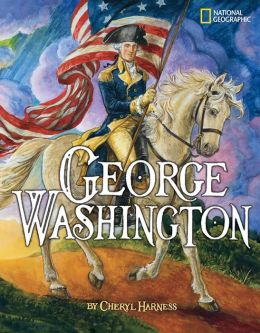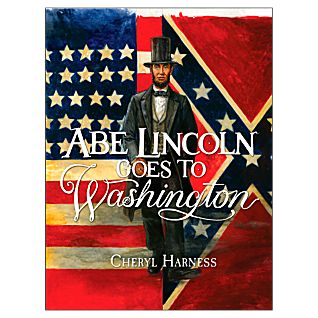“Just the facts, Ma’am. Just the facts.” Isn’t that what
Sgt. Joe Friday would say on Dragnet?
Actually, no. Sgt. Friday’s actual lines were "All we want are the
facts, ma'am" and "All we know are the facts, ma'am".
The writer's mind is always working - always questioning,
always wondering. Last Saturday night, I sat down for some TV time and the movie Hysteria was on. I love that time frame, the actors in the movie, and
the subject. In my last book, I touch upon the diagnosis of hysteria that was
used to describe the feelings of women in the late 19
th century. It’s
a topic that interests me, so I settled down to spend a few hours watching the
movie.
The beginning of the movie starts with “1880” at the bottom
of the screen. I’m enjoying the movie until Maggie Gyllenhaal’s character,
Charlotte, rides down the street on her bike. “Wait, a second”, that voice way
back in my head says. “That’s a safety bike, they weren't invented until
1885.” I know, the director was trying to show that the character of was a
strong, independent woman. The bicycle in the 1890s was a very instrumental in
the woman’s rights movement. In fact, Susan B. Anthony told the
New York World’s Nellie
Bly in 1896 that bicycling had “done more to emancipate women than anything
else in the world.” But, the safety bike, though it is very cool, wasn’t invented until 1885.
The next day, as I am wont to do, I researched the movie, the
characters, and the story. The movie totally changed the actual facts and
characters for Hollywood’s version of the story. I was okay with that. I was
not okay with the appearance of the safety bike. Actually on IMDB in the goofs
section, it states:
“The character Charlotte Dalrymple is shown
riding a safety bicycle. The film is set in 1880, but safety bicycles weren't
invented until 1885.”
IMDB not a valid source, but a good jumping off point, I
soon plunged into my own quest for the truth. After swimming through the pages
and pages of research, images, and such, I narrowed down the manufacturer of
the bicycle in the movie - who may not manufactured this particular style until many years past 1885. Before I could continue, to
squelch my excitement, that little voice in the back of my head asked, “Don’t
you have a manuscript due in a few days?
The manuscript I just finished contains about 200 "things" about Chicago. Since it is for kids, I thoroughly researched every fact and
yelled at my computer when I found twisted information. For example, several
sources said that rainbow sherbet is a Chicago thing. The truth is "rainbow cone" is a Chicago thing, not rainbow sherbet.
In my description of the 1893 Chicago Columbian Exposition, I
wanted to show the many inventions from the fair. Many sources said that the 1893 Chicago
World’s Fair introduced the world to the Pledge of Allegiance, Cracker Jack,
the Ferris Wheel and Juicy Fruit Gum.
The Random House site for
The Devil in the White City says:
"The World’s
Fair introduced America to such classic favorites as Cracker Jack, Shredded
Wheat. and Juicy Fruit and was the birth of historically significant symbols
like Columbus Day, the Ferris Wheel, and the Pledge of Allegiance."
In actually, what Erik Larson wrote about Juicy Fruit was:
“They sampled a
new, oddly flavored gum called Juicy Fruit and caramel-coated popcorn called
Cracker Jack.”
Evidently, what Erik Larson writes is fact. Many sources now
state, crediting
The Devil in the White City as the source, that the 1893 Chicago
World’s Fair introduced the world to Cracker Jack, the Ferris Wheel, and Juicy
Fruit. Cracker Jack was actually sold at the fair, the Ferris Wheel no one can
doubt was a hit at the fair, but Juicy Fruit was not officially at the fair.
Other products that receive second billing as introductions at the fair had
actual booths; Aunt Jemima Pancake Mix, Shredded Wheat, Pabst Blue Ribbon, and others. The Wrigley website reads:
"In 1893, during an economic
depression, he introduced two brands that would become company icons: Wrigley’s
Spearmint® and Juicy Fruit®."
Going straight to the source, I sent an email
to the Senior Vice President of Wrigley Corporate Affairs. We went back and
forth a few times but I didn’t get an official answer to my question:
"In time for the fair and the
millions visited. It would have been sold by salesmen and women to the crowds
attending may of whom visited Chicago for the first time. There will not have
been a Juicy Fruit pavilion I'm pretty sure it was launched in time for the
worlds fair rather than at it.”
"It was as I thought. It was
launched in Chicago in time for the World’s Fair but it wasn’t an official part
of the Fair.”
“The fair bought many people to
chicago so lots of footfall for the brand."
"But in 1893 Wrigley was a small
business and remain so for another 15 years or so.”
In the end, what I finally wrote as part of
the 1893 Chicago Columbian Exposition:
William Wrigley Jr. introduced Juicy Fruit gum. (And, people wonder why writing takes so long.)
I started this piece by quoting Sgt. Joe Friday, I thought
I’d end it by sharing a few fabulous fact quotes by some very wise folks.
“If the facts don't fit the theory, change the
facts.” ~Albert_Einstein
“Facts are stubborn things, but statistics are
pliable." ~Mark Twain
“Facts are stubborn things; and whatever may be
our wishes, our inclinations, or the dictates of our passion, they cannot alter
the state of facts and evidence.” ~John Adams
“The truth is more important than the
facts.” ~Frank Lloyd Wright
“False facts are highly injurious to the
progress of science, for they often endure long; but false views, if supported
by some evidence, do little harm, for everyone takes a salutary pleasure in
proving their falseness; and when this is done, one path towards error is
closed and the road to truth is often at the same time opened.” ~Charles Darwin
And, finally,
"Never trust quotes you find on the internet." ~Abraham Lincoln















 In 2004, my book Skyscraper was published. In 2010, it went out of print. I wrote a post about it,
In 2004, my book Skyscraper was published. In 2010, it went out of print. I wrote a post about it, 